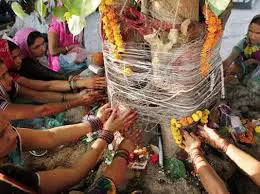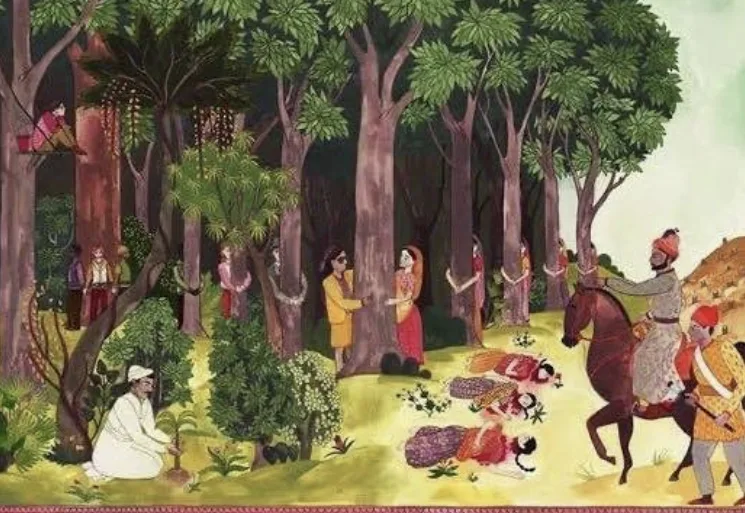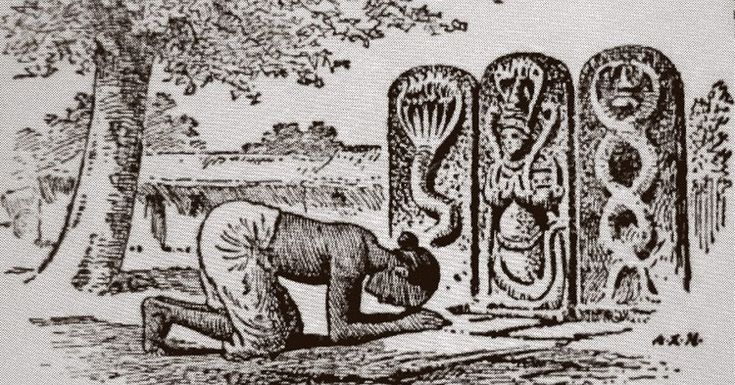It is now established by science that human beings cannot live without forests, forests cannot exist without wild life and wild life cannot live without forest. Humans, forests and wildlife are therefore integrated.
The Theme of Conserving Forests and Protecting Wild life is imparted through the Samskaram of Reverence for Forests Symbolised by Vruksha [tree] and Reverence for Wild life Symbolised by Naaga [snake] Vandanam. Tree Symbolises the Forest and the Snake Symbolises the wild life..
1. Vruksha Vandanam

a
Forest destruction causes atmospheric pollution. So, if atmosphere which protects human life and health has to be preserved against pollution, forest have to be preserved. If forestshave to be preserved human beings have to be made conscious of the need to protect forests-which also means protecting wild animals. This calls for a comprehensive knowledge of the interdependence between man, forests, animals and atmosphere.
b
Deforestation affects :
- Water cycle 'Trees, and plants in general, affect the water cycle significantly: Soil, Water and Plant characteristics important to irrigation". North Dakota State University.
- Bio diversity, medicinal plants.
- Forests support biodiversity, providing habitat for wildlife Rainforest Biodiversity Shows Differing Patterns, Science Daily, August 14, 2007.
c
It has been estimated that we are losing 137 plant, animal and insect species every single day due to rainforest deforestation, which equates to 50,000 species a year. Rainforest Facts. (Rain-tree.com (2010-03-20) Retrived on 2010-08-29).
d
"Religious Conversion has led to environmental destruction"- Henry Lamb
In this spiritually charged world, special sacred trees occupy a respected, ceremonial position and some are even worshipped. The association between many different kinds of trees, plants and flowers with religious practice is a deep and significant one. It is based in a thought system that recognizes that every living thing—including every plant and tree—is an individual personality.
Amrita Devi She prevented the woodcutters from felling the tree and was killed by them for her resistance, as were her three daughters. The news spread like wildfire among the Bhishnoi community and hundreds of them assembled on the spot, prepared to give their lives in this cause and 363 of them did in resisting the trees being. This is known as the Khejrali Massacre. The Maharaja apologised for the conduct of his officials but this has ever since been an inspiration to the environmental protectionists of Bhart.
The Bishnois people's defence of the natural environment needs to be more widely known as oneof the world's classic instances of martyrdom in defence of the environment.
The renowned Bharatiya conservationist Valmik Thapar, described the Bishnoi in his 1997 book Land of the Tiger as "the primary reason that desert wildlife still exists on the subcontinent".

2. Naag Vandanam
Naag worship is a tradition being followed in Bharat since ages and is present in several ancient cultures, where Naags are portrayed as an entity of strength. Due to Naags' nature of casting its skin, it represents rebirth, death and mortality. Several Hindu temples houses Naag idols and images carved on rocks

